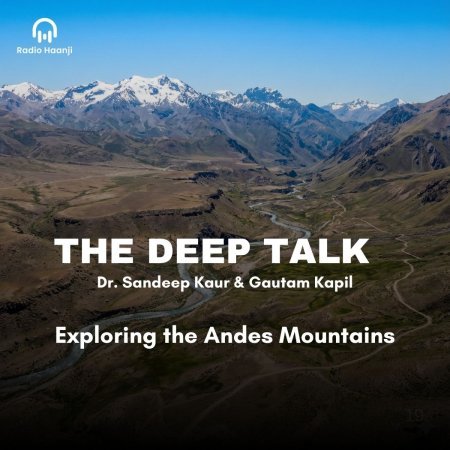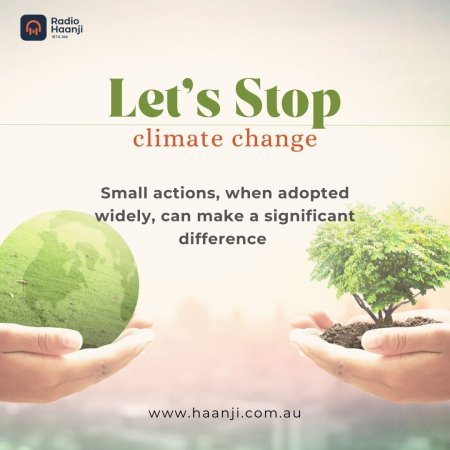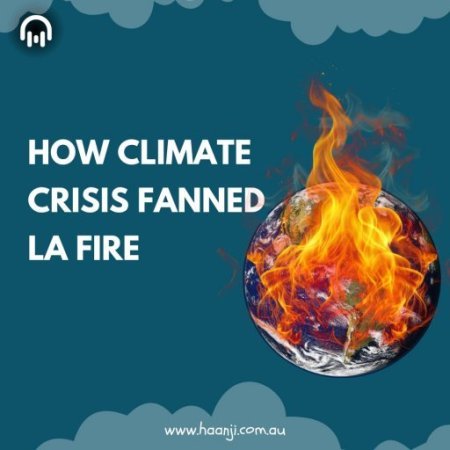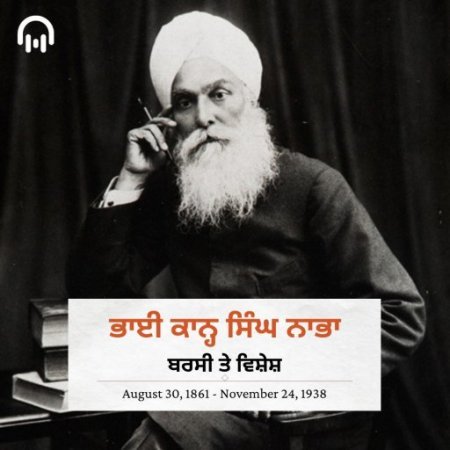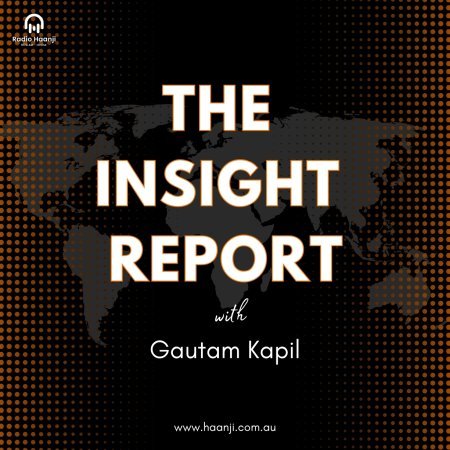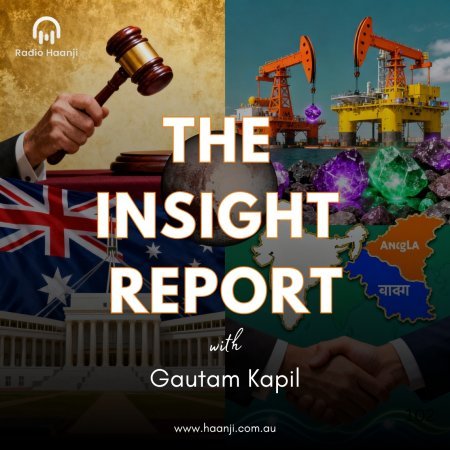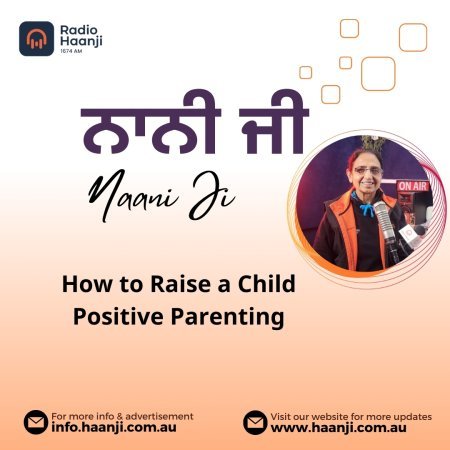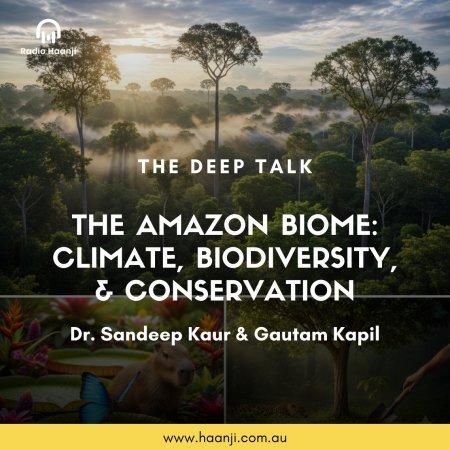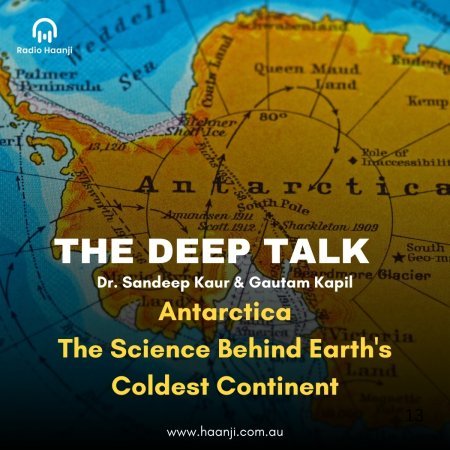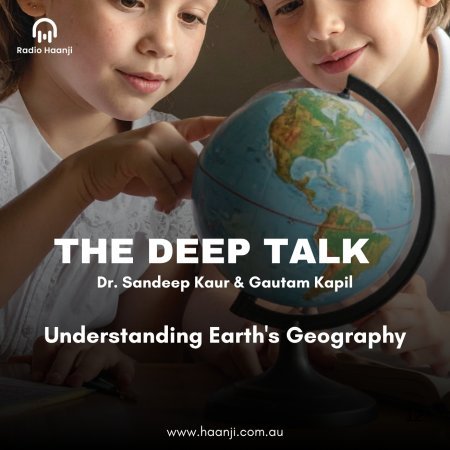ਆਰਥਿਕ ਵਿਕਾਸ ਅਤੇ ਨਵੀਨਤਾ ਖੋਜ ਲਈ ਤਿੰਨ ਵਿਗਿਆਨੀਆਂ ਨੂੰ ਮਿਲਿਆ ਅਰਥਸ਼ਾਸਤਰ ਦਾ ਨੋਬਲ ਪੁਰਸਕਾਰ
ਰਾਇਲ ਸਵੀਡਿਸ਼ ਅਕਾਡਮੀ ਨੇ 2025 ਦੇ ਅਰਥਸ਼ਾਸਤਰ ਦੇ ਨੋਬਲ ਪੁਰਸਕਾਰ ਨੂੰ ਜੋਇਲ ਮੋਕਿਰ ਨੂੰ ਅੱਧਾ ਅਤੇ ਫਿਲਿਪ ਏਗੀਅਨ ਅਤੇ ਪੀਟਰ ਹਾਵਿਟ ਨੂੰ ਅੱਧਾ ਸਾਂਝਾ ਦਿੱਤਾ ਹੈ ਜੋ ਨਵੀਨਤਾ ਅਤੇ ਰਚਨਾਤਮਕ ਵਿਨਾਸ਼ ਨਾਲ ਆਰਥਿਕ ਵਿਕਾਸ ਨੂੰ ਵਿਆਖਿਆ ਕਰਨ ਵਾਲੇ ਹਨ ਅਤੇ ਇਹ ਵਿਕਾਸ ਨੂੰ ਹਲਕੇ ਵਿੱਚ ਨਾ ਲੈਣ ਦੀ ਸਿੱਖਿਆ ਦਿੰਦੇ ਹਨ। ਮੋਕਿਰ ਨੇ ਤਕਨੀਕੀ ਤਰੱਕੀ ਲਈ ਜ਼ਰੂਰੀ ਗੱਲਾਂ ਪਛਾਣੀਆਂ ਅਤੇ ਏਗੀਅਨ-ਹਾਵਿਟ ਨੇ ਐਂਡੋਜੀਨਸ ਗ੍ਰੋਥ ਮਾਡਲ ਬਣਾਇਆ ਜੋ ਨਵੇਂ ਉਤਪਾਦਾਂ ਨਾਲ ਪੁਰਾਣੇ ਨੂੰ ਬਦਲਣ ਨੂੰ ਦੱਸਦਾ ਹੈ। ਇਹ ਪੁਰਸਕਾਰ 11 ਮਿਲੀਅਨ ਸਵੀਡਿਸ਼ ਕਰੋਨੇ ਦਾ ਹੈ ਅਤੇ ਪਿਛਲੇ ਸਾਲ ਏਸਮੋਗਲੂ, ਜੌਹਨਸਨ ਅਤੇ ਰੌਬਿਨਸਨ ਨੂੰ ਮਿਲਿਆ ਸੀ ਜੋ ਆਜ਼ਾਦ ਸਮਾਜਾਂ ਵਿੱਚ ਖੁਸ਼ਹਾਲੀ ਨੂੰ ਵਿਆਖਿਆ ਕਰਦੇ ਹਨ।
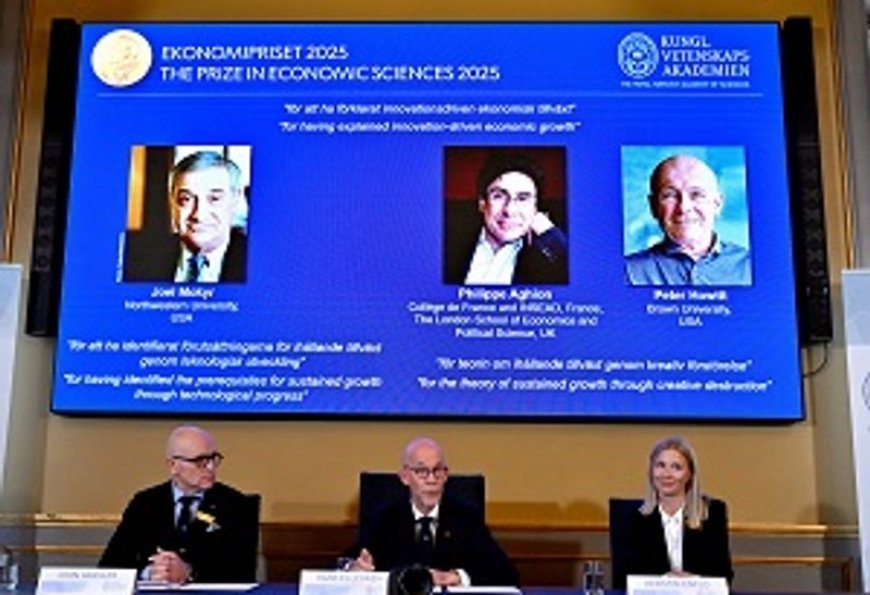
ਸਟਾਕਹੋਲਮ ਵਿੱਚ ਅੱਜ ਰਾਇਲ ਸਵੀਡਿਸ਼ ਅਕਾਡਮੀ ਆਫ ਸਾਇੰਸਿਜ਼ ਨੇ 2025 ਦੇ ਅਰਥਸ਼ਾਸਤਰ ਦੇ ਨੋਬਲ ਪੁਰਸਕਾਰ ਦੀ ਘੋਸ਼ਣਾ ਕੀਤੀ ਹੈ ਜੋ ਕਿ ਤਿੰਨ ਵਿਗਿਆਨੀਆਂ ਨੂੰ ਨਵੀਨਤਾ ਅਤੇ ਰਚਨਾਤਮਕ ਵਿਨਾਸ਼ ਨਾਲ ਆਰਥਿਕ ਵਿਕਾਸ ਨੂੰ ਵਿਆਖਿਆ ਕਰਨ ਲਈ ਦਿੱਤਾ ਗਿਆ ਹੈ। ਇਹ ਪੁਰਸਕਾਰ ਜੋਇਲ ਮੋਕਿਰ ਨੂੰ ਅੱਧਾ ਅਤੇ ਫਿਲਿਪ ਏਗੀਅਨ ਅਤੇ ਪੀਟਰ ਹਾਵਿਟ ਨੂੰ ਅੱਧਾ ਸਾਂਝਾ ਮਿਲਿਆ ਹੈ। ਜੋਇਲ ਮੋਕਿਰ ਨਾਰਥਵੈਸਟਰਨ ਯੂਨੀਵਰਸਿਟੀ ਤੋਂ ਹਨ ਅਤੇ ਉਨ੍ਹਾਂ ਨੇ ਤਕਨੀਕੀ ਤਰੱਕੀ ਨਾਲ ਲਗਾਤਾਰ ਵਿਕਾਸ ਲਈ ਜ਼ਰੂਰੀ ਗੱਲਾਂ ਨੂੰ ਪਛਾਣਿਆ ਹੈ। ਫਿਲਿਪ ਏਗੀਅਨ ਕਾਲਜ ਡੀ ਫਰਾਂਸ, ਆਈਐੱਨਐੱਸਈਏਡ ਅਤੇ ਲੰਡਨ ਸਕੂਲ ਆਫ ਇਕਨਾਮਿਕਸ ਤੋਂ ਹਨ ਅਤੇ ਪੀਟਰ ਹਾਵਿਟ ਬ੍ਰਾਊਨ ਯੂਨੀਵਰਸਿਟੀ ਤੋਂ ਹਨ। ਇਹ ਤਿੰਨੇ ਵਿਗਿਆਨੀ ਨਵੀਨਤਾ ਨਾਲ ਆਰਥਿਕ ਵਿਕਾਸ ਨੂੰ ਵਿਆਖਿਆ ਕਰਨ ਵਾਲੇ ਹਨ ਜੋ ਕਿ ਨਵੇਂ ਉਤਪਾਦਾਂ ਅਤੇ ਉਤਪਾਦਨ ਵਿਧੀਆਂ ਨਾਲ ਪੁਰਾਣੀਆਂ ਚੀਜ਼ਾਂ ਨੂੰ ਬਦਲਦੇ ਹਨ ਅਤੇ ਇਸ ਨਾਲ ਲੋਕਾਂ ਦੀ ਜੀਵਨ ਪੱਧਰ ਵਧਦੀ ਹੈ।
ਆਰਥਿਕ ਵਿਗਿਆਨ ਪੁਰਸਕਾਰ ਕਮੇਟੀ ਦੇ ਮੈਂਬਰ ਜੌਹਨ ਹੈਸਲਰ ਨੇ ਕਿਹਾ ਕਿ ਪੁਰਸਕਾਰ ਜੇਤੂਆਂ ਦਾ ਕੰਮ ਇਹ ਦੱਸਦਾ ਹੈ ਕਿ ਅਸੀਂ ਵਿਕਾਸ ਨੂੰ ਹਲਕੇ ਵਿੱਚ ਨਹੀਂ ਲੈ ਸਕਦੇ ਅਤੇ ਰਚਨਾਤਮਕ ਵਿਨਾਸ਼ ਦੇ ਮੂਲ ਸਿਧਾਂਤ ਨੂੰ ਬਣਾਏ ਰੱਖਣਾ ਪਵੇਗਾ ਤਾਂ ਜੋ ਅਸੀਂ ਮੁੜ ਥੱਕ ਵਿੱਚ ਨਾ ਪੈ ਜਾਈਏ। ਇਹ ਪੁਰਸਕਾਰ ਨਵੀਨਤਾ ਨਾਲ ਆਰਥਿਕ ਵਿਕਾਸ ਨੂੰ ਵਿਆਖਿਆ ਕਰਨ ਵਾਲਾ ਹੈ ਅਤੇ ਇਹ ਵਿਗਿਆਨ ਆਧਾਰਿਤ ਨਵੀਨਤਾ, ਰਚਨਾਤਮਕ ਵਿਨਾਸ਼ ਅਤੇ ਬਦਲਾਅ ਲਈ ਖੁੱਲ੍ਹੇ ਸਮਾਜ ਨੂੰ ਉਜਾਗਰ ਕਰਦਾ ਹੈ। ਜੋਇਲ ਮੋਕਿਰ ਨੇ ਆਪਣੀ ਕਿਤਾਬ "ਏ ਕਲਚਰ ਆਫ ਗ੍ਰੋਥ: ਓਰਿਜਿਨਜ਼ ਆਫ਼ ਦਿ ਮਾਡਰਨ ਇਕਨਾਮੀ" ਵਿੱਚ ਨਵੀਨਤਾ ਨੂੰ ਸਫਲ ਬਣਾਉਣ ਲਈ ਵਿਗਿਆਨਕ ਵਿਆਖਿਆਵਾਂ ਦੀ ਲੋੜ ਨੂੰ ਦੱਸਿਆ ਹੈ ਅਤੇ ਉਨ੍ਹਾਂ ਨੇ ਇਹ ਵੀ ਕਿਹਾ ਹੈ ਕਿ ਸਮਾਜ ਨੂੰ ਨਵੀਆਂ ਆਈਡੀਆਜ਼ ਲਈ ਖੁੱਲ੍ਹਾ ਰਹਿਣਾ ਚਾਹੀਦਾ ਹੈ। ਫਿਲਿਪ ਏਗੀਅਨ ਅਤੇ ਪੀਟਰ ਹਾਵਿਟ ਨੇ 1980 ਦੇ ਅੰਤ ਵਿੱਚ ਐਂਡੋਜੀਨਸ ਗ੍ਰੋਥ ਮਾਡਲ ਬਣਾਇਆ ਜੋ ਰਚਨਾਤਮਕ ਵਿਨਾਸ਼ ਨਾਲ ਵਿਕਾਸ ਨੂੰ ਵਿਆਖਿਆ ਕਰਦਾ ਹੈ ਅਤੇ ਇਹ ਆਰਥਿਕ ਵਿਗਿਆਨ ਵਿੱਚ ਇੱਕ ਵੱਡਾ ਯੋਗਦਾਨ ਹੈ।
ਇਹ ਪੁਰਸਕਾਰ 11 ਮਿਲੀਅਨ ਸਵੀਡਿਸ਼ ਕਰੋਨੇ ਦਾ ਹੈ ਜੋ ਕਿ ਲਗਭਗ 1.2 ਮਿਲੀਅਨ ਅਮਰੀਕੀ ਡਾਲਰ ਬਣਦਾ ਹੈ ਅਤੇ ਇਹ 10 ਦਸੰਬਰ ਨੂੰ ਸਟਾਕਹੋਲਮ ਵਿੱਚ ਦਿੱਤਾ ਜਾਵੇਗਾ। ਇਹ ਅਰਥਸ਼ਾਸਤਰ ਦਾ ਨੋਬਲ ਪੁਰਸਕਾਰ ਹੈ ਜੋ 1969 ਵਿੱਚ ਪਹਿਲੀ ਵਾਰ ਦਿੱਤਾ ਗਿਆ ਸੀ ਅਤੇ ਤੱਕਰੀਬਨ 96 ਵਿਜੇਤਾਵਾਂ ਨੂੰ ਮਿਲ ਚੁੱਕਾ ਹੈ ਜਿਨ੍ਹਾਂ ਵਿੱਚ ਸਿਰਫ਼ ਤਿੰਨ ਔਰਤਾਂ ਹਨ। ਪਿਛਲੇ ਸਾਲ 2024 ਵਿੱਚ ਇਹ ਪੁਰਸਕਾਰ ਡੈਰਨ ਏਸਮੋਗਲੂ, ਸਿਮੋਨ ਜੌਹਨਸਨ ਅਤੇ ਜੇਮਸ ਏ ਰੌਬਿਨਸਨ ਨੂੰ ਮਿਲਿਆ ਸੀ ਜਿਨ੍ਹਾਂ ਨੇ ਅਧਿਐਨ ਕੀਤਾ ਕਿ ਕੁਝ ਦੇਸ਼ ਅਮੀਰ ਅਤੇ ਹੋਰ ਗਰੀਬ ਕਿਉਂ ਹਨ ਅਤੇ ਆਜ਼ਾਦ ਅਤੇ ਖੁੱਲ੍ਹੇ ਸਮਾਜਾਂ ਵਿੱਚ ਖੁਸ਼ਹਾਲੀ ਦੀ ਸੰਭਾਵਨਾ ਵੱਧ ਹੁੰਦੀ ਹੈ। ਇਹ ਪੁਰਸਕਾਰ ਅਰਥਸ਼ਾਸਤਰ ਵਿੱਚ ਨਵੀਨਤਾ ਅਤੇ ਵਿਕਾਸ ਨੂੰ ਸਮਝਣ ਵਿੱਚ ਵੱਡਾ ਯੋਗਦਾਨ ਪਾਉਂਦਾ ਹੈ ਅਤੇ ਆਧੁਨਿਕ ਤਕਨੀਕੀ ਵਿਕਾਸ ਨਾਲ ਜੁੜੇ ਮੁੱਦਿਆਂ ਨੂੰ ਉਜਾਗਰ ਕਰਦਾ ਹੈ।
In Stockholm today, the Royal Swedish Academy of Sciences announced the 2025 Nobel Prize in Economics, awarded to three scientists for explaining innovation-driven economic growth. The prize is given half to Joel Mokyr and half jointly to Philippe Aghion and Peter Howitt. Joel Mokyr from Northwestern University has identified the prerequisites for sustained growth through technological progress. Philippe Aghion from College de France, INSEAD, and the London School of Economics, and Peter Howitt from Brown University, are recognized for the theory of sustained growth through creative destruction. These three scientists explain how innovation leads to economic development by replacing old products and production methods with new ones, improving living standards.
John Hassler, a member of the Economic Sciences Prize Committee, said that the laureates' work shows that we cannot take growth lightly and must uphold the principles of creative destruction to avoid falling back into stagnation. This prize explains innovation-driven economic growth and highlights science-based innovation, creative destruction, and societies open to change. Joel Mokyr, in his book "A Culture of Growth: Origins of the Modern Economy," explained the need for scientific explanations to succeed innovations and said that society must remain open to new ideas. Philippe Aghion and Peter Howitt developed the endogenous growth model in the late 1980s, which explains growth through creative destruction and is a major contribution to economics.
This prize is worth 11 million Swedish kronor, approximately 1.2 million US dollars, and will be presented in Stockholm on December 10. It is the Nobel Prize in Economics, first awarded in 1969, and has gone to about 96 laureates, including only three women. Last year in 2024, it was awarded to Daron Acemoglu, Simon Johnson, and James A. Robinson, who studied why some countries are rich and others poor, proving that freer and more open societies have greater chances of prosperity. This prize contributes significantly to understanding innovation and growth in economics and highlights issues related to modern technological development.
What's Your Reaction?







